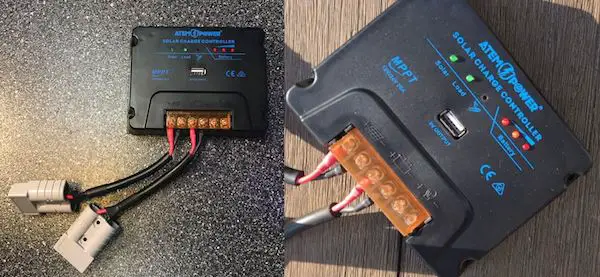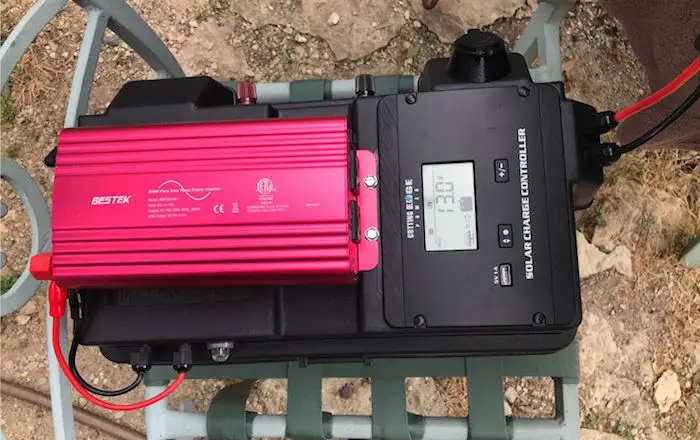Solar generators simply harness the power of the sun to generate electricity. They consist of four main components: solar panels, a charge controller, an inverter, and a battery.
Solar panels absorb sunlight and convert it into direct current (DC) electricity. The charge controller manages this power to safely charge the battery. When the battery is used to power electronics or appliances, the inverter converts the battery’s direct current into alternating current (AC), providing a clean and renewable energy source.
In the following sections, we will delve deeper into the intricacies of solar generators and explore their components, functionality, advantages, and limitations. By understanding the inner workings of solar generators, you will gain valuable insights into the technology behind renewable energy and the role it plays in our quest for a sustainable future. So, let’s unravel the science behind solar generators and uncover the power of the sun!
Key components of a solar generator system
To understand how solar generators work, it is essential to familiarize oneself with the key components that make up a solar generator system. These components work in harmony to capture, convert, store, and deliver solar energy in the form of electricity. In this section, we will explore the main elements of a solar generator system.
1. Solar Panels

Solar panels, also known as photovoltaic (PV) panels, are the primary component of a solar generator system. These panels consist of multiple solar cells made of semiconductor materials, typically silicon. When sunlight hits the solar cells, the photons in the light excite the electrons in the semiconductor material, creating a flow of direct current (DC) electricity.
2. Charge Controller

A charge controller is an essential component that regulates the flow of electricity between the solar panels and the batteries. It ensures that the batteries are charged efficiently and prevents overcharging, which could damage the batteries. The charge controller also prevents reverse current flow from the batteries to the solar panels during low-light or nighttime conditions.
3. Battery Bank
Solar generators often incorporate a battery bank to store the excess electricity generated by the solar panels. These batteries provide a means of storing energy for use during periods of low sunlight or at night. The stored energy can power electronic devices and appliances even when the sun is not shining. Battery capacity is an important consideration, as it determines the amount of electricity that can be stored and used later.
4. Inverter

The electricity produced by solar panels is in the form of direct current (DC), while most household appliances and electronic devices operate on alternating current (AC). The inverter is responsible for converting the DC electricity from the solar panels or batteries into AC electricity, making it compatible with standard electrical appliances and the grid.
5. Electrical Load
The electrical load refers to the devices and appliances that are powered by the solar generator system. These can include household appliances, lights, electronic gadgets, and more. The size and capacity of the solar generator system should be determined based on the electrical load requirements to ensure that sufficient power is available.
Most solar generators have multiple output ports to use with your devices. These include AC ports, USB ports, and 12V DC ports. The output power allowed from these ports varies depending on the solar generator model. Each system (regardless of the brand) has specifications for each output port.
For a visual understanding of these components, I suggest watching my video below.
Solar panels and their role in generator functionality
Solar panels play a crucial role in the functionality of a solar generator. They are the primary component responsible for capturing sunlight and converting it into usable electrical energy. In this section, we will explore the significance of solar panels in the operation of a solar generator.
How solar panels work
Solar panels, also known as photovoltaic (PV) panels, are composed of multiple solar cells made from semiconductor materials, typically silicon. The solar cells contain layers of specially treated materials that create an electric field when exposed to sunlight. When photons from sunlight strike the solar cells, they excite the electrons in the material, causing them to move and generate an electric current. This phenomenon is known as the photovoltaic effect.
The power output of solar panels is determined by factors such as the size and efficiency of the solar cells, the intensity of sunlight, and the angle and orientation of the panels. Solar panels are designed to maximize sunlight absorption and conversion efficiency. By arranging the solar panels in a way that optimizes their exposure to sunlight, the solar generator system can generate more electricity.
How AC power is produced using solar energy
The electrical current produced by the solar cells is in the form of direct current (DC). Direct current is suitable for certain applications, such as charging batteries, but most household appliances and electronic devices operate on alternating current (AC).
To make the electricity generated by solar panels compatible with AC devices, an inverter is used in the solar generator system. After the solar energy is stored in the solar generator’s battery, the inverter converts the DC electricity from the battery into AC electricity, ensuring that it can power common household appliances and electronics.
Conclusion
Solar generators offer a fascinating and eco-friendly approach to generating electricity. The components of a solar generator system work in harmony to ensure a continuous and reliable power supply.
Understanding the principles and key components of solar generator operation provides a solid foundation for appreciating the efficiency and sustainability of this technology. Solar generators empower individuals and communities to embrace clean energy and contribute to a greener future, making them a promising solution in our pursuit of renewable energy sources.
